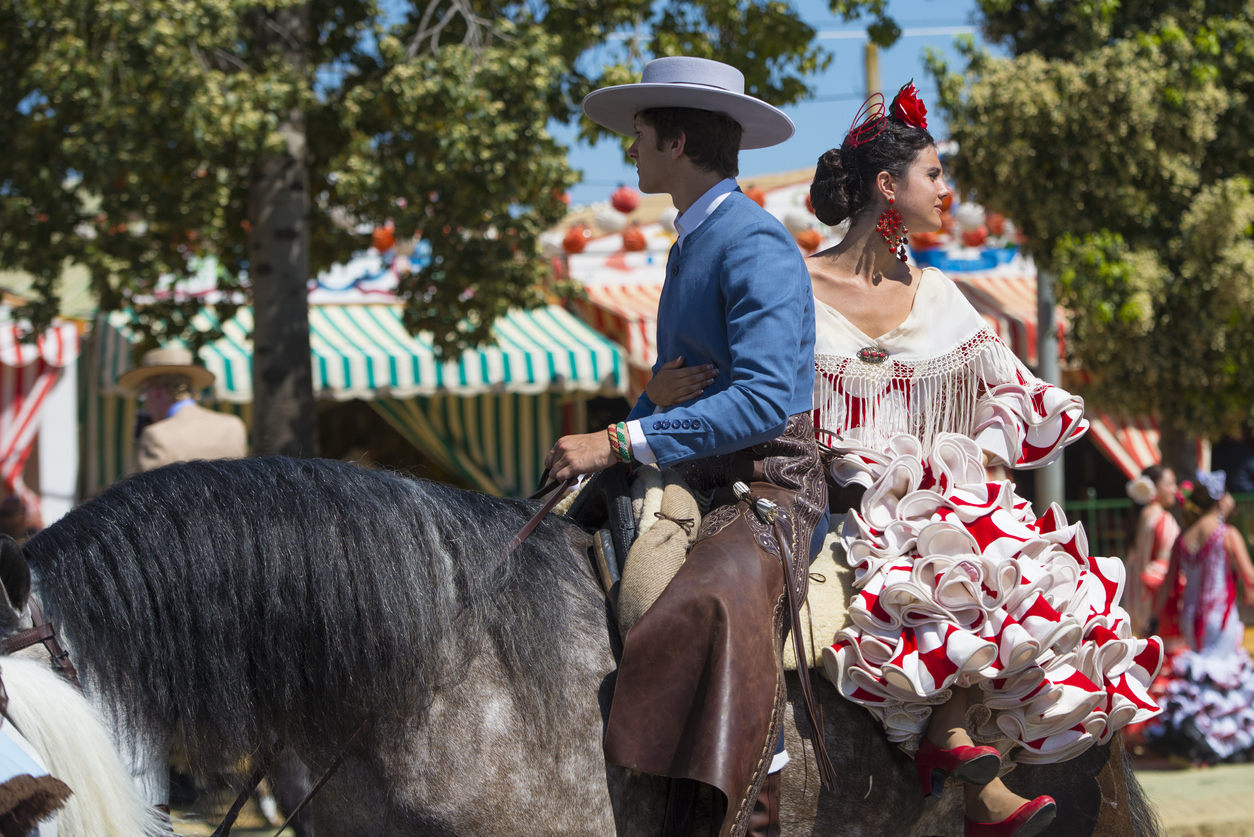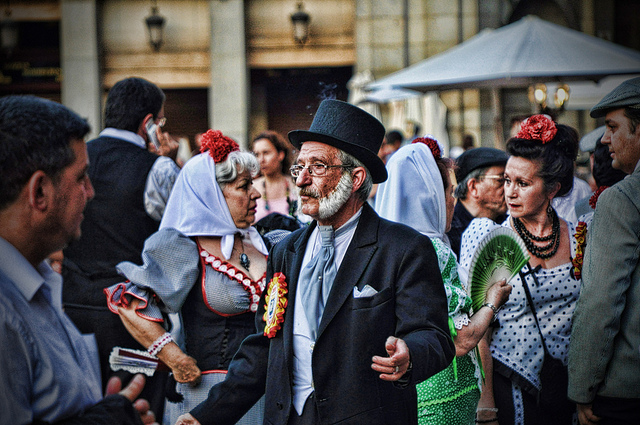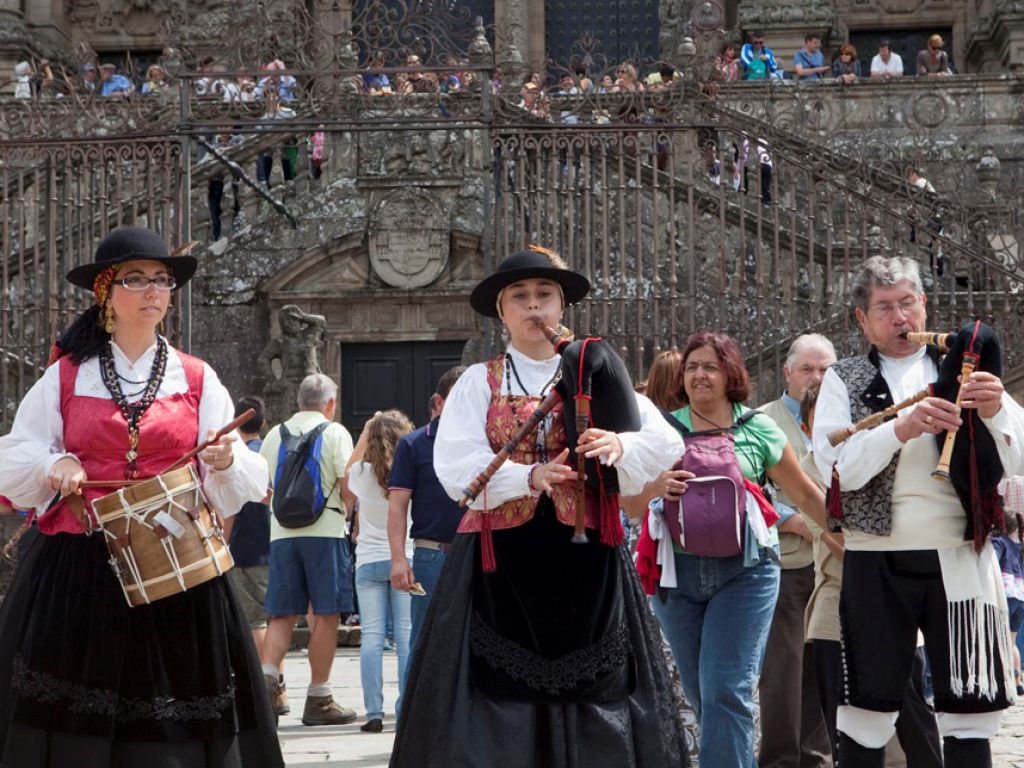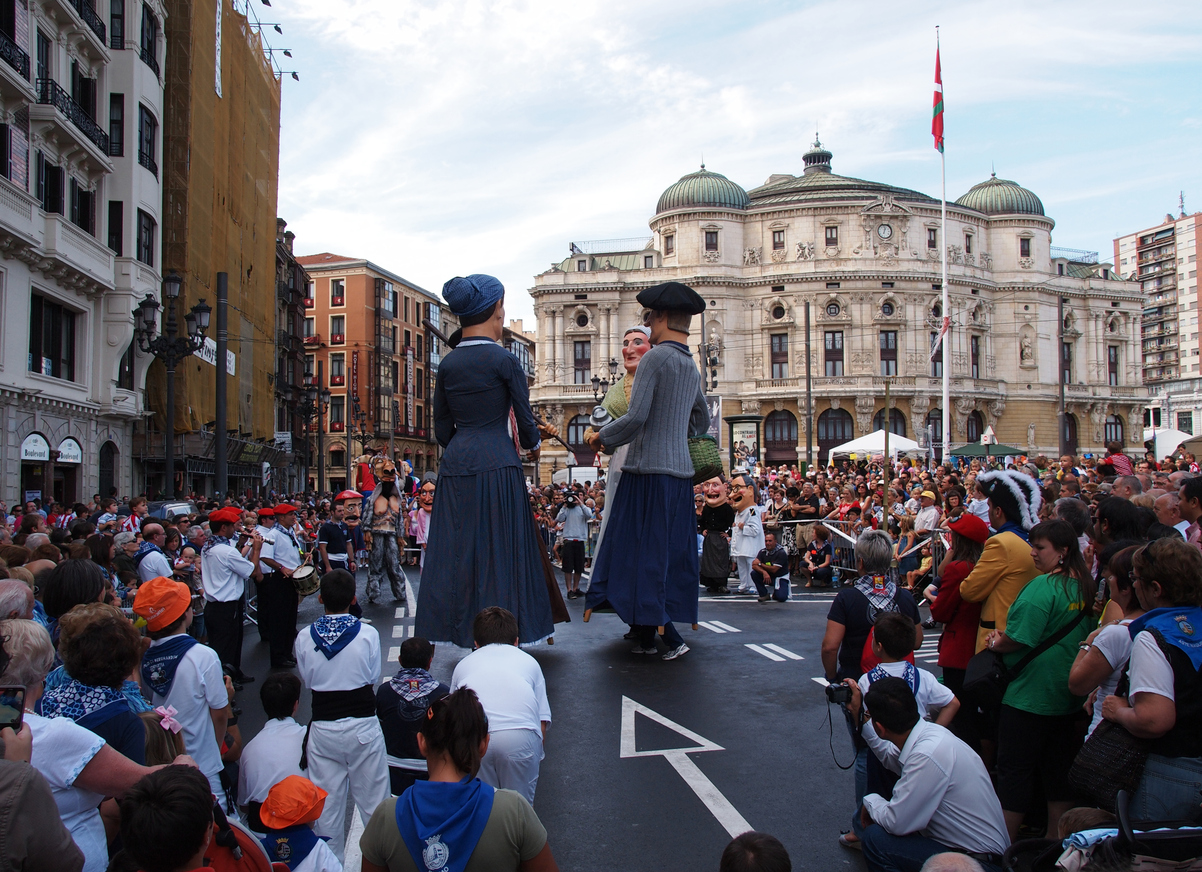 kiko_jimenez
kiko_jimenez
The holiday season is once again nearly upon us! But Spain is fantastic for festivals not just during Yuletide but all year round, with variously fascinating, fun, and moving events held across the country in every month – some local/regional, others national but with local twists. In fact, choosing just ten to highlight isn’t easy, but here goes, in calendar order:
Carnaval – Late February/Early March
As in the rest of the Catholic world, pre-Lenten Carnaval in late winter plunges a number of Spanish cities and towns into festivities lasting more than a week (sometimes nearly a month), with parades along colourfully decorated streets; parties on said streets and elsewhere; performances of all types; revellers in outlandish masks and costumes; and lots of eating and (especially) drinking. Each locale puts its own local twists on the partying, but it’s widely agreed that the top spots to be are Cádiz down in Andalusia (this coming year, 20 February-1 March), which specialises in humour and satire; Tenerife‘s capital Santa Cruz (19 Feb.-1 March) with its Caribbean flair; and Las Palmas, capital of Gran Canaria (7 Feb.-1 March), where one of the highlights is a plethora of drag queens and other daring, borderline scandalous goings-on.
The Falles of Valencia – March
For a number of days every March in this gracious Mediterranean city celebrates the 19 March Feast Day of San Josep (in Valencian Catalan; in Spanish it’s San José). Central to the festivities (also thought to be of mediaeval origin) are ninots, gigantic papier-mâché caricatures from political to fantastical figures – with a good dose of social commentary – and the Falles culminate when the ninots are burned in bonfires on the streets; marching bands, street parties, and general revelry complete the picture. The falles (fallas in Spanish) been placed on the list of UNESCO World Intangible Heritage, with a citation that they epitomise “collective creativity and the safeguarding of traditional arts and crafts. It is also a source of community pride, contributor to cultural identity and enhances social cohesion. In the past, the festivity was also a way of preserving the Valencian language when it was prohibited”.
Holy Week (Easter) – April
Church attendance may be low these days, but culturally Spain remains one of Europe’s most Catholic countries — perhaps never more so than during Semana Santa, a bigger deal here since the Middle Ages than in almost any other place in the world. Many people take the entire week off as a holiday, and many others take to the streets in scores of cities and towns from today, Viernes de Dolores (“Friday of Sorrows”) through Easter Sunday and Easter Monday (in 2020, April 5-11). For the most part, the elaborate processions and ceremonies are organised by cofradías (lay fraternities) whose members, the nazarenos, march in multi-colour, pointy-capped outfits.
The more over-the-top festivities tend to be found in Andalusia; Seville’s (above) is probably the biggest and most elaborate of all, with the streets of the old town thronged from Palm Sunday to Easter Sunday, and the highlights being the processions from the evening of Holy Thursday through the dawn of Good Friday. One of the distinctive features in Seville are the pasos, like wooden floats with religious scenes, but carried not by vehicles but by teams of men. Malaga also puts on a particularly spirited show this week, with similar processions featuring floats called tronos (thrones), and other famous ones include those of Murcia and Cartagena in Murcia province, next door to Andalusia on the Mediterranean coast. Zamora in Castile-León, meanwhile, is known for its very medieval-feeling Semana Santa, dating back to 1179.
Seville’s April Fair
Starting as a livestock fair in 1846, the Feria de Abril takes over Andalusia’s largest city for seven days (this year, 26 April-2 May), with a parade of carriages and horseback riders carrying prominent citizens to the bullring, La Real Maestranza. Meanwhile, the fairgrounds on the far bank of the Guadalquivir River are blanketed with the striped, gaily decorated tents of social clubs, leading families, political parties, and other organisations and associations, and thousands of locals and visitors throng here to eat, drink, and perform sevillanas, one of the most characteristic of Spanish dances (an amusement park here is also in full swing). A celebration of regional culture at its most colourful!
 MuseodelPrado.es
MuseodelPrado.es
Madrid’s Fiesta de San Isidro – May
Every 11 to 15 May, many madrileños participate in a fiesta marking the 1622 canonisation of the Spanish capital‘s patron saint St. Isidore with a programme of events centred especially on the historic district of Carabanchel in the city’s southwest, across the Manzanares River, where especially in the park Pradera de San Isidro plenty of locals don 19th-century costume. More cultural than religious these days, San Isidro celebrates both Madrid’s castizo (traditional) culture as well as its modern-day manifestations, with a variety of performances, parades, fairs, exhibits, and of course partying, both in the streets and bars/clubs of Carabanchel as well as parts of downtown.
St. John’s Eve – June
On June 23, the night before the feast day of St. John the Baptist, quite a few locations throughout Spain celebrate the Noche de San Juan in ways big and small – sometimes with big, colourful street festivals, in other cases by lighting hundreds of bonfires on beaches across the country (set to help participants rid themselves of evil spririts, a throwback to pre-Christian times). The holiday also correlates and often coincides with Midsummer, aka the June solstice – celebrated by Celts, Ango-Saxons, and other pre-Christians back to at least the ancient Romans, to mark the end of spring and the arrival of summer.
Various locations have their own local twists. In Málaga, for example, malagueños commonly take advantage of St. John’s Eve bonfires and barbecues to grill and share with each other a typical local favourite, espetos de sardinas (sardine skewers). Up in Galicia, this night is unthinkable without a queimada next to the ocean – a schnapps-based libation which is set on fire and comes with a dose of mysticism and even a dab of conjuring. In Catalonia, where the relatively recent (1955) but already beloved tradition of lighting the Canigó Flame from the eponymous iconic mountain of the Pyrenees in various cities, including Barcelona – arriving at the Old Town’s Plaça Sant Jaume before continuing on the ignite bonfires in various neighbourhoods of the city. Perhaps the best known celebration of all is the Fogueres de Sant Joan (Hogueras de San Juan in Spanish) in the coastal city of Alicante, which ever since 1928 what’s set aflame have been huge, colourful, sometimes satirical and usually whimsical figures inspired by the falles celebration of Valencia.
 SantiagoTurismo.com
SantiagoTurismo.com
St. James Festival in Santiago de Compostela – July
The high point of the year in the capital of Galicia is the last two weeks of July, when the Festival de Santiago Apóstol is held in the UNESCO World Heritage old quarter around the 25 July feast day of the city’s patron saint (and indeed, the very reason for its transformation into a city), St. James the Great, one of Jesus Christ’s 12 apostles, whose remains were said to have ended up here and rediscovered in the 9th century by a hermit. There’s a proliferation of regional costumes and folk music/dancing, along with various other concerts, exhibitions, and events. The highlights are a pair of fireworks displays – one on 24 July, the other on 31 July at the festival’s close – and the elaborate 25 July mass, a highlight of which is the swinging overhead of an enormous incense burner called the botafumeiro.
Pamplona’s San Fermín Festival – July
Bull runnings are held in a number of towns and villages in Spain as well as Portugal, but the ones staged for a week in July in Navarre‘s capital are unquestionably the most famous (or depending on how you look at it, infamous, as these events are opposed by many animal-rights groups). They’re three-minutes sprint at 8 am each morning from 7 to 14 July in which hundreds of people sprint ahead of a dozen rather amped-up bovines through the streets to the bullring (and injuries, even deaths are not unknown – the last one was in 2009).
But there’s a lot more to the Sanfermines. Other cool daily events include parades of gigantes y cabezudos, caricaturesque traditional figures; traditional Basque sports like stone-lifting (Navarre is ethnically Basque but not politically part of the Basque Country); fireworks; and of course bullfights. In addition, there are one-off rituals such as the St. Fermín procession, when the statue of the saint (which along with St. Francis Xavier is the patron of Navarre) is paraded through the streets; El Struendo (“The Roar”), so named because it basically consists of a crowd making a ruckus in the Plaza Consistorial outside the city hall with drums, whistles, and anything else they can lay hands on; and the closing event, when everyone gathers in the same spot to wave candles and sing pobre de mí (“poor me”) because the fun is over for the year. All of the above, of course, is lubricated with copious amounts of wine, beer, and other strong drink.
La Tomatina in Bunyol, Valencia – July
On the last Wednesday in August (the 26th in 2020), this normally sleepy town of just under 10,000 (also known by its Spanish-language name Buñol and located just a half hour west of Valencia city), quadruples in population when tens of thousands of visitors join locals in an hourlong free for all, pelting each other with more than 115,000 kilos of surplus local tomatoes (this is a fertile produce farming area). The Tomatina is said to have originated in 1945 when some kids disrupted a local parade, and tomato-lobbing ensued and eventually caught on. There’s a fiesta the night before as well as an after party and other associated partying; and you can buy a ticket including transport from Valencia for 35 euros.
 jarnogz
jarnogz
Bilbao’s “Big Week” – August
Since 1978, the Basque Country‘s largest city (and the fifth largest in Spain) has pulled out all its stops for more than a week in August (this year, 17-25) for Aste Nagusia (Semana Grande in Spanish), with a wide range of events – pop, jazz, and classical concerts; competitions of all kinds, including traditional Basque rural sports like wood chopping, stone- and haybale-lifting, and drilling holes into rocks; fireworks displays; and parades including gigantes y cabezudos (“giants and big heads”) figures of papier-mâché, wood, and cloth made to depict traditional and contemporary figures (sometimes satirically).

